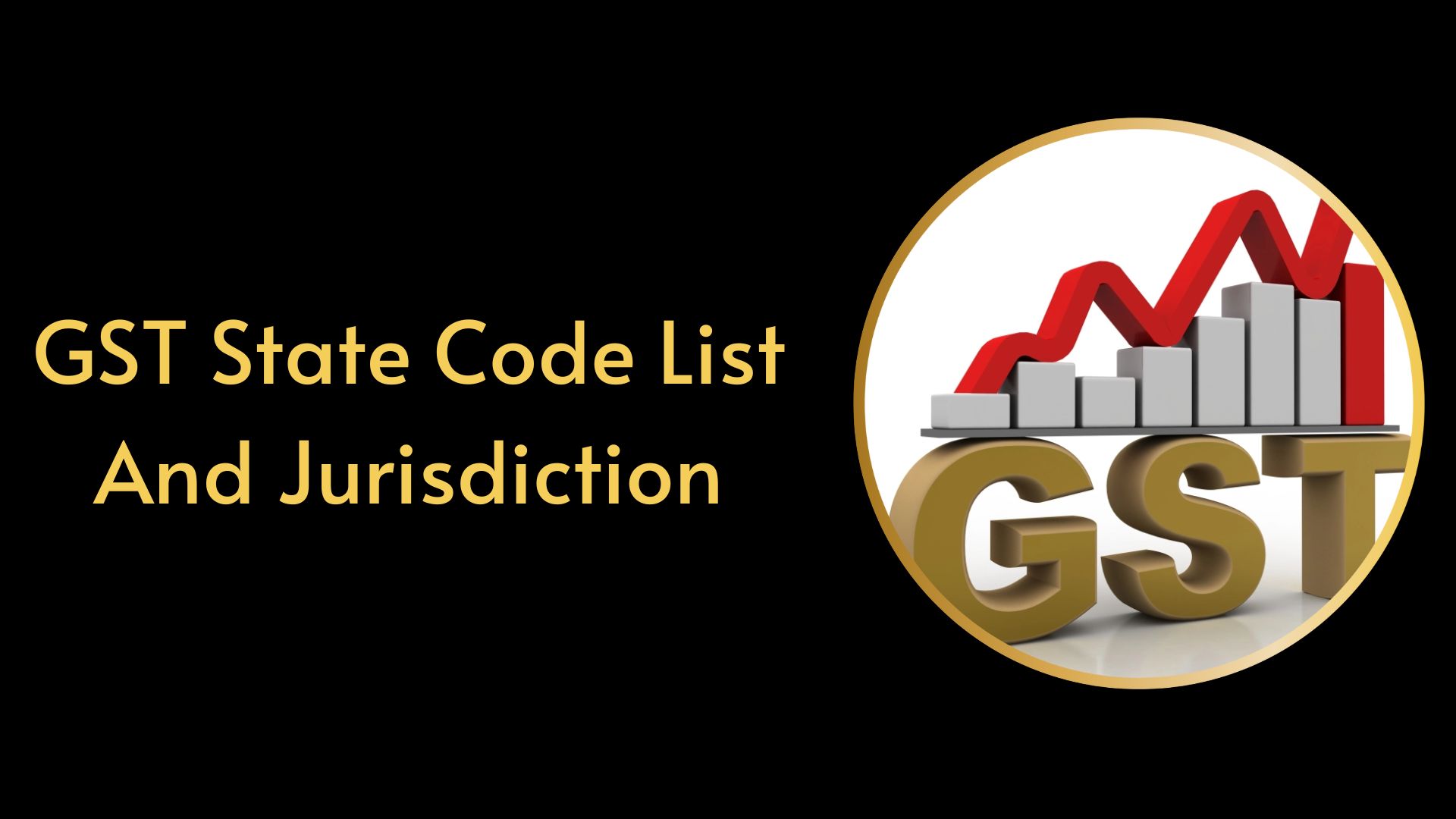GST system in India is administered by both the central
and state governments, with each state having its own GST State Code and
Jurisdiction.
The GST State Code is a unique two-digit code assigned to
each state in India for the purpose of GST registration and filing of tax
returns. The Jurisdiction refers to the area under the authority of a
particular GST officer or tax authority responsible for administering and
enforcing the GST laws and regulations in that area.
The GST State Code List and Jurisdiction are regularly
updated by the government, and businesses are required to stay updated with the
latest information to comply with GST regulations.
#What is GST State Code?
GST State Code refers to the unique code assigned to each
state and union territory in India under the Goods and Services Tax (GST)
regime. This code is used for the purpose of identification of the state or
union territory in various GST-related documents, such as invoices, returns,
and challans.
The GST State Code is a two-digit code, where the first two
digits represent the state code as per the Indian Census 2011. For example, the
state code for Maharashtra is 27, so its GST State Code is 27. Similarly, the
state code for Tamil Nadu is 33, so its GST State Code is 33.
#What is the purpose of the GST State Code?
The main purposes of the GST State Code are:
- Identifying the origin of goods and services: The GST
State Code helps to identify the state or union territory from where the goods
or services have been supplied.
- Determining the place of supply: The GST State Code is
used to determine the state or union territory where the goods or services have
been consumed or used.
- Facilitating tax administration: The GST State Code helps
tax authorities to track the GST compliance of taxpayers in each state or union
territory.
- Enabling inter-state trade: The GST State Code is
important for businesses engaged in inter-state trade as it helps to calculate
the IGST (Integrated GST) component of the tax.
- Simplifying compliance: The GST State Code enables
businesses to easily identify the GST rate applicable to their goods or
services based on the state or union territory they are registered in.
#Where do we need GST state code in India?
In the Goods and Services Tax (GST) system, the State Code
is required for a variety of purposes, such as:
1) Registration: The State Code is used to identify the
State or Union Territory where a taxpayer is registered under GST.
2) Invoice generation: A GST invoice must include the State
Code of the supplier and the recipient of goods or services.
3) GST Returns: In the GST returns, the State Code is used
to report the amount of tax collected and paid by the taxpayer in each state or
Union Territory.
4) E-way Bill generation: The State Code is required to
generate an E-way Bill, which is a document required for the movement of goods
worth more than Rs. 50,000 within the state or across different states.
5) Input tax credit: The State Code is used to determine the
eligibility for claiming Input Tax Credit (ITC) on GST paid on goods or
services purchased in a particular state.
#List of GST State Codes
Below is the list of GST state codes for all the states and
union territories in India:
- Andaman and Nicobar Islands 35
- Andhra Pradesh 28
- Arunachal Pradesh 12
- Assam 18
- Bihar 10
- Chandigarh 04
- Chhattisgarh 22
- Dadra and Nagar Haveli 26
- Daman and Diu 25
- Delhi 07
- Goa 30
- Gujarat 24
- Haryana 06
- Himachal Pradesh 02
- Jammu and Kashmir 01
- Jharkhand 20
- Karnataka 29
- Kerala 32
- Ladakh 38
- Lakshadweep 31
- Madhya Pradesh 23
- Maharashtra 27
- Manipur 14
- Meghalaya 17
- Mizoram 15
- Nagaland 13
- Odisha 21
- Puducherry 34
- Punjab 03
- Rajasthan 08
- Sikkim 11
- Tamil Nadu 33
- Telangana 36
- Tripura 16
- Uttar Pradesh 09
- Uttarakhand 05
- West Bengal 19
- Other territory 97
- Center Jurisdiction 99
#What is GST Jurisdiction?
GST Jurisdiction refers to the geographical area or region
over which a particular authority or officer has control and authority to
administer and enforce the provisions of the Goods and Services Tax (GST) laws.
The GST Jurisdiction can be divided into two levels, the
State Level and the Central Level. At the State level, the State Tax Officer is
responsible for administering the GST law within the State, while at the
Central level, the Central Tax Officer is responsible for administering the GST
law at the national level.
The Jurisdictional authority is responsible for ensuring
that the taxpayers comply with the provisions of the GST laws, and for
conducting audits, assessments, and investigations related to GST.
#Classification of GST jurisdictions in India
The implementation of GST has resulted in two categories of
GST jurisdictions, namely State Jurisdictions and Central Jurisdictions.
State Jurisdictions are responsible for administering and
enforcing GST in their respective states. Each state in India has its own GST
department that is responsible for registration, assessment, audit, and
collection of GST within their state. They are responsible for managing the GST
compliance of taxpayers operating within their state, as well as for conducting
audits and investigations into any suspected cases of non-compliance.
Central Jurisdictions are responsible for administering and
enforcing GST on a national level. The Central Board of Indirect Taxes and
Customs (CBIC) is the apex body that oversees the implementation of GST in
India. The CBIC is responsible for formulating policies, procedures, and
guidelines for the implementation of GST, as well as for managing GST
compliance on a national level.
Central Jurisdictions also include the GST Council, which is
responsible for making recommendations on key GST issues, such as tax rates,
exemptions, and revenue-sharing between the central and state governments.
As a result, the GST jurisdictions are categorized into the
following tiers, in order of hierarchy and size:
- Zones
- Commission rates
- Divisions Offices
- Range Offices
#How to check or search for GST Jurisdiction?
To check or search for GST jurisdiction in India, you can
follow these steps:
1) Visit the official GST portal at https://www.gst.gov.in/
2) Click on the 'Services' tab and select the 'Search Taxpayer'
option from the dropdown menu.
3) Enter the GSTIN (Goods and Services Tax Identification
Number) or the legal name of the business in the search field.
4) Fill in the captcha code and click on the 'Search'
button.
5) The GST portal will display the details of the taxpayer,
including the State Jurisdiction, Center Jurisdiction, and the Name of the GST
officer.
Conclusion
The GST State Code List and Jurisdiction is a comprehensive
system that helps to identify and manage the tax liabilities of businesses
registered under the Goods and Services Tax (GST) regime in India. The state
code list provides a unique code to each state and union territory of India,
while the jurisdiction system assigns the appropriate tax authority for each
registered business. Understanding and complying with these codes and
jurisdictions is essential for businesses to ensure timely and accurate GST return filings and avoid penalties or legal issues.

